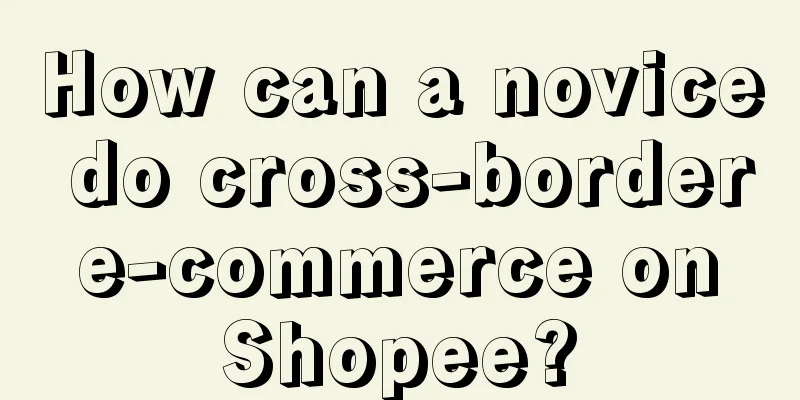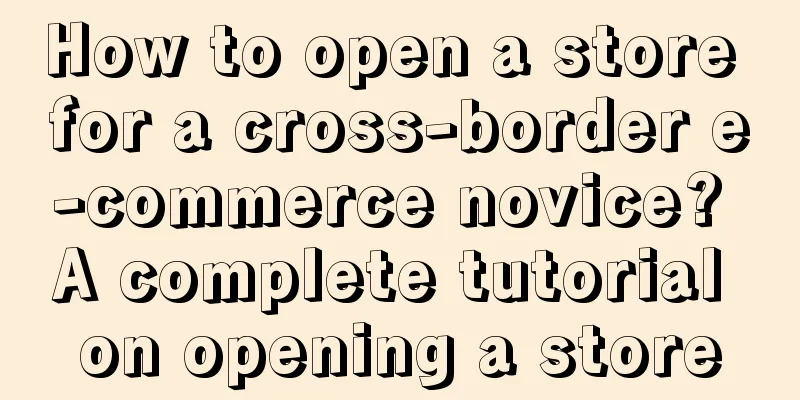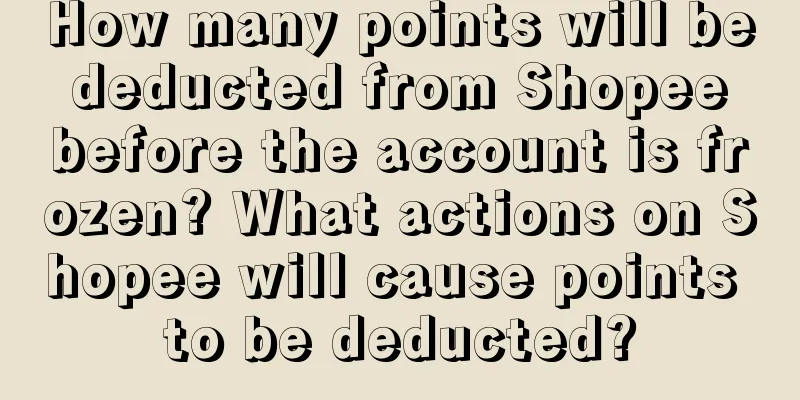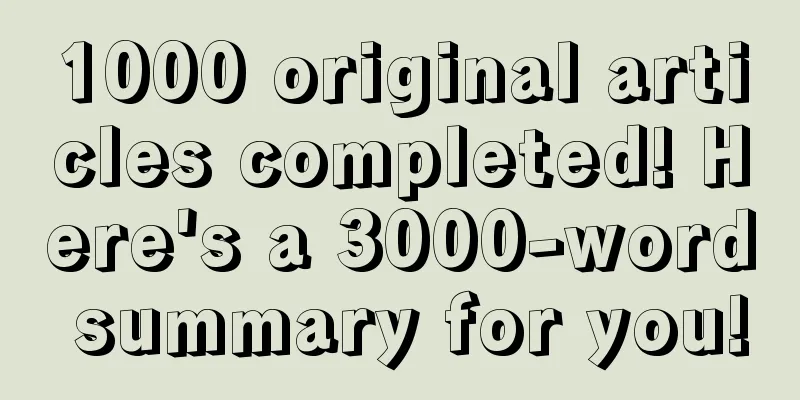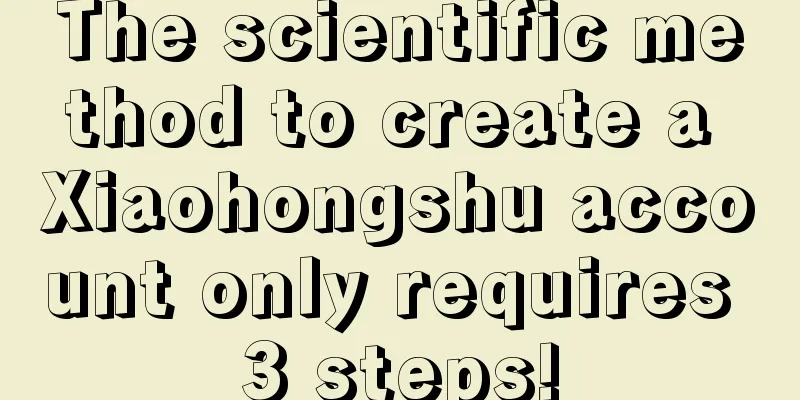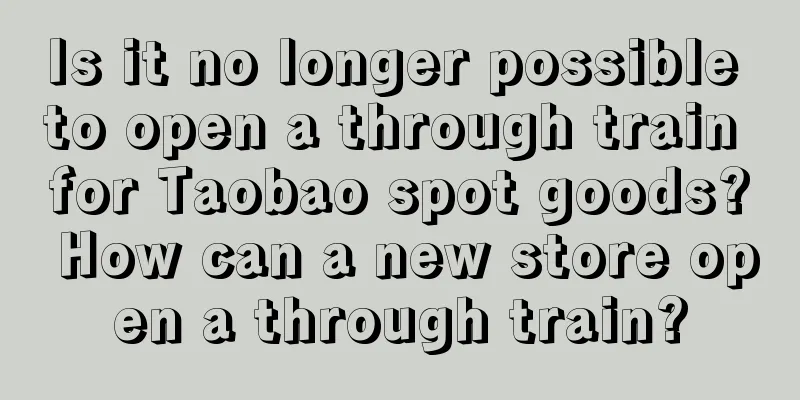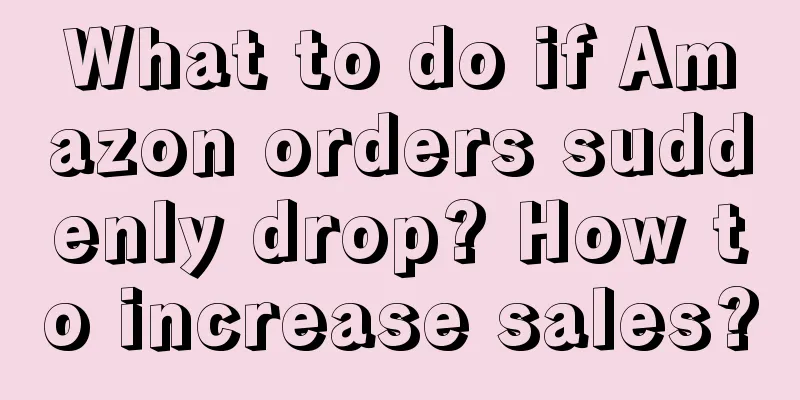Why should consumers buy from you?
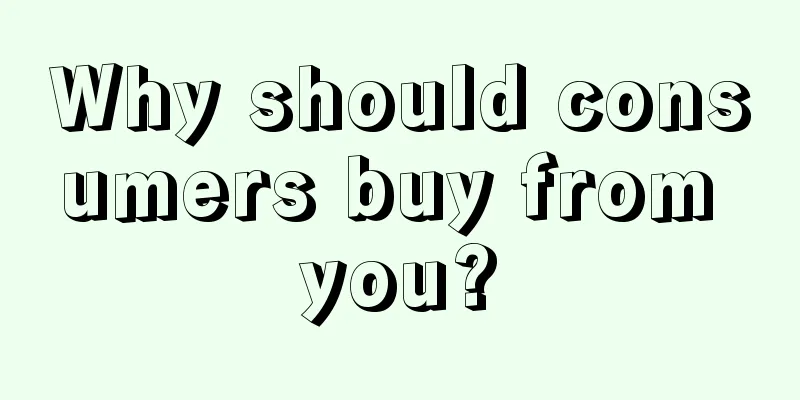
In the general preface of "Visual Hammer", there is an article "The Birth of Categories and the End of Strategy", which mentions Hegel's philosophical concept of "the end of history". What we think of as history is generally what has already happened, and in this sense, history will never end. The "history" mentioned by Hegel is the sum of human experience and ideology, which is the philosophical level. In this sense, human beings will definitely reach this end at some point in time. The "end of history" has been found. Hegel pointed out that "the most fundamental driving force behind the development of human history is not economic, but psychological, the human desire to be recognized." Hegel believed that during the French Revolution, mankind had found the philosophical end of history, democracy and freedom. Because democracy and freedom can make everyone recognized and promote social development. Borrowing Hegel's philosophical idea of "the end of history", "The Birth of Categories and the End of Strategy" believes that the end of business strategy is categories. Creating and dominating a category is the core of business strategy, and it also provides a clearer execution standard for the focus concept: focus all resources to occupy a category in the minds of customers. The customer mind is the ultimate battlefield of marketing competition. Consumers "think in terms of categories and express in terms of brands" is the driving mechanism of consumer behavior. Consumers' "thinking" and "expression" are exactly what the brain does, which is the concept of "mind" in positioning. In previous articles, I have repeatedly used Steven Pinker’s “Investigating the Mind” to correct the definition of mind for everyone: the mind is not the brain, but what the brain does. Drucker believes that the only purpose of an enterprise is to create customers. Positioning is the physiological mechanism that enterprises must follow to create customers. That is, to occupy a category in the minds of consumers with a brand. When consumers think about what category to use to meet their needs, their minds will express the brand name of the corresponding category. This process only takes a short moment, but this moment completely affects the consumer's psychology and behavior, thus affecting which company the consumer will become a customer of. From the perspective of physiological mechanism, positioning is an excellent conceptual name. In terms of marketing results, the brand has a clear operational goal. Therefore, positioning is not only a marketing result for enterprises to meet competition, but also a set of physiological mechanisms that must be followed when creating customers. The end of history is freedom and democracy found at the psychological level. The end point of the strategy is to find the categories and positioning from a psychological level. Can needs that are closely related to human psychological reactions also find their end point? If we can find the end point of human needs, we can definitely find the end point of marketing behavior! After all, marketing behavior is intended to guide humans to find what they believe to be the optimal solution when solving demand problems . 1. Has the end of human needs appeared?To find the end of a 100-meter race, we must first know how far a 100-meter race is. Similarly, to find the end of human needs, we must know how wide the scope of human needs is. According to Baidu Encyclopedia, "demand refers to the willingness and ability of people to purchase a specific commodity at various possible prices within a certain period of time." There are four key points in a sentence: one is "a certain time"; two is "willing"; three is "able"; four is "commodity". Two and three, in marketing terms, are the consumer's personal "willingness to pay" and "ability to pay". One and four, one is the cause of demand, and the other is the result of demand. Only when there is cause, effect and process can the behavior initiated by needs be complete. But the process is often full of variables. Within a certain period of time, the mismatch between consumers’ willingness to pay and their ability to pay will affect what kind of goods they choose to meet their needs, and different product choices will have different emotional impacts on individuals. When your willingness to pay is greater than your ability to pay, it means that within this period of time, the product can meet your needs, but you cannot buy it. As the lever tilts infinitely to the left, your needs become your desires. The higher the desire, the more you will be motivated to pay more for this product. As your ability to pay changes, your emotions may change from surprise to excitement to desire to disappointment. For example, when I first came to Beijing, I wanted to buy a house in Beijing. After a few years, I wanted to buy a second-hand house in Beijing. Until now, I have chosen to leave Beijing at a certain time. When your willingness to pay is less than your ability to pay, it means that during this period of time, it is relatively easy for you to obtain the product and it can meet your current needs. As the lever tilts infinitely to the right, the previous products will become less and less attractive to you, and you may even feel disgusted. Products are just a value form to solve needs. Demand will not disappear because of your negative emotions about a certain product. Demand will still exist, but you will have higher requirements for products that solve your needs. When you get a better product than before, you will change from negative demand to positive demand. For example, as your living standards improve, your quality requirements for daily necessities will become higher and higher. Therefore, our needs will affect our willingness to pay as our ability to pay changes. The degree to which our willingness to pay is satisfied will affect our personal emotions. The quality of personal emotions will in turn affect consumer behavior and psychology, and thus affect whether positioning can effectively occupy the right position in the minds of consumers, thereby judging whether the company's marketing behavior is effective. Demands and products are on the surface, while emotions are the driving force behind the dark side. John B. Watson, the founder of behavioral psychology, had a legendary life. He came to work at JWT because of a colleague's recommendation. Although Watson entered the advertising company in the middle and late stages of his life, he also left behind many classic advertising theories that are regarded as the golden rule. He believes: "Whether consumers buy a product has nothing to do with whether the content of the advertisement is consistent with objective facts. The direction of describing the product functions in those advertisements is completely wrong. Consumers are influenced by advertisements and buy products entirely because of the emotional stimulation brought to them by the advertisements. People are not rational in front of advertisements, but emotional." I said something in "The Self-cultivation of a Product", which has become a catchphrase among many friends: "Rationality can make consumers remember that you are a good product, but emotion can make consumers never forget that you are a good brand." As time goes by, you may let go of the feelings of the person who hurt you the most, but it is very difficult for you to forget the name of this person. There is no such thing as a scumbag, it just depends on who has true feelings for whom. When the granaries are full, we know etiquette. Our needs will affect our emotions as our ability to pay changes. At the same time, our needs will jump with our positive emotions or fall with our negative emotions. This is the most famous theory about needs - "Maslow's Hierarchy of Needs". Maslow first proposed the hierarchy of needs theory in his 1943 publication, A Theory of Human Motivation. This theory is constructed based on three basic assumptions.
Maslow divided needs into five levels, from low to high: physiological needs, safety needs, social needs, respect needs and self-actualization needs. The first level: physiological needs, which are people’s needs for food, water, air, etc. They are the most important needs of human beings and the most basic components of life. The second level: security needs. People need a stable and safe living environment to ensure their survival. The third level: social needs, to establish connections or relationships with others and to find belonging and love. The fourth level: Respect needs: affirmation of self-worth and ability, and the desire to be respected and recognized by others. The fifth level: Self-realization: People pursue higher levels of their own abilities and spirits, and constantly improve themselves. With the favorable development of society and the continuous changes in population structure, people's needs will not be strictly met in accordance with these five levels. In the 1970s, our parents were more worried about physiological needs and safety needs. How to eat well was the first problem to be solved; the post-90s generation was more worried about social needs and self-improvement. When they were around 30 years old, they began to worry about safety needs. They were under great work pressure and had serious physical overdrafts. They were nervous every time they went to the hospital. The post-00s generation was more worried about the need for self-realization. They have a superior material life, rich knowledge intake, and a strong sense of self. They hope to be recognized by their parents, leaders, and friends, and are more willing to pay for their own preferences. The core idea of "Self-cultivation of a Brand" is to guide enterprises on how to use "Maslow's Hierarchy of Needs" to complete the transformation from product-commodity-brand. There is a detailed description of Maslow's hierarchy of needs, which will not be elaborated in this article. I have not studied in depth why Hegel defined "freedom" and "democracy" as the end point of history, but from the perspective of Maslow's hierarchy of needs, freedom and democracy belong to the self-actualization level, that is, the psychological need to be recognized. When the needs reach the fifth level, it reaches the pinnacle of the spirit. Maslow has long given us the answer to the end point of consumer needs, which is "self-actualization" , how consumers "can become better themselves through the satisfaction of their needs." This "better self" has two meanings: one is our own self, and the other is the self of others. We should use the greater self in the eyes of others to achieve the smaller self in our own heart. In plain words, a person will have different identities at different stages of his life, such as student, parent, teacher, courier, driver... Different identities of different people make the world orderly and colorful. In order to play our multiple roles well, we will have various needs, and these different needs together support a living person, a person with all five senses of joy, anger, sorrow and happiness. The self you want to be is only the first two levels of Maslow's needs, while the last three levels are the self you want to establish in the eyes of others. We torture ourselves for these two "selves" throughout our lives. Consumers want to be better, but they don’t know how to be better. We are being guided by businesses to be better all our lives. The biography of Steve Jobs mentioned one thing: Steve Jobs never did user research. He said that if Henry Ford had done market research before inventing the car, the answer he would have gotten would definitely be that consumers wanted a faster carriage. When discussing this, many people said that Jobs was wrong, because the real demand of consumers is not a faster carriage, but a faster way. Sorry, Jobs was not wrong, it was our subjective consciousness that was wrong. The first car was produced in 1886. Over the past 100 years, cars have indeed become faster and more sophisticated, but the changes are only in shape and accessories, not a revolutionary change from horse-drawn carriage to car. If consumers really think about the problem in this way, please ask: Compared with cars, what is a faster way? You will definitely say high-speed rail or airplane. If you have never seen a high-speed rail or an airplane, ask the same question again: Compared with cars, what is a faster way? I believe that most people cannot answer it, because they have no concept of this answer in their minds. The best answer is "faster cars", and only a few people can give this answer. In the social environment at that time, if you ask the general public "What is a faster way than a horse-drawn carriage", the best answer must be "a faster horse-drawn carriage", because consumers only know that they want "a faster horse-drawn carriage" and don't know what a "faster horse-drawn carriage" is. What consumers need all the time is a faster carriage, and companies need to provide them with faster travel through innovation. This travel method can be a faster carriage, or a car or a high-speed train! This is the difference between user thinking and corporate thinking. Jobs once expressed his attitude towards innovation. He said, "Innovation is about integrating various things together. Creative people can always see the connection between various things and integrate them into new things. This is innovation." The following sentence is equally important: "Understanding what we want is the first thing we need to know. And using the right standards to judge whether the public also wants what they want is what we should be good at. This is what companies pay us to do. It has nothing to do with popular culture and it has nothing to do with fooling the public." If you ask consumers, "Do you need a faster carriage?" they will definitely want one. However, between "wanting" and "being able to have", we need a correct standard as Jobs said:
All three standards are indispensable, otherwise your innovation will have no commercial value and will not promote social development. From a philosophical perspective, history has already ended, and from a physiological perspective, demand has already ended. But from an economic development perspective, the two will never stop until the earth explodes. What drives demand development is the innovation ability of enterprises . With the tension in Sino-US relations, I believe everyone has a deep understanding of this. 2. Where is the end point of marketing behavior?The end point of human needs is to become a better self, so the marketing behavior of enterprises must be to guide consumers to become a better self by using the brand! In theory, the end point of marketing behavior is also there. After all, marketing activities are intended to guide consumers to find what they believe to be the optimal solution when solving their needs. However, the current marketing concept of most companies is still to convince consumers through marketing activities that the brand can provide them with better products than competitors, and they are still at the product thinking stage. Products are the root of brands. It is not that product thinking is undesirable, but that times have changed. With the scale of production and the saturation of the market, the differentiation of enterprises is getting smaller and smaller, and the intensity of competition is getting higher and higher. The improvement of economic level has changed our consumption structure. There are more and more young consumers pursuing the "self-realization" level. The differentiated value given to brands can no longer stay at the product level. The products provided by major brands are basically the same, and they all come from the same factory. The only difference is the packaging and the concept. Today's consumers can easily find different brands of the same manufacturer through multiple media, and the space for brand premium that stays at the product differentiation level is getting smaller and smaller. The most important reason is that domestic enterprises have poor innovation capabilities. We haven't seen the birth of "Ahaha Moment" products for a long time. This is no longer the era of material scarcity and information blockage. If you want to win through product differentiation, then the company must have sufficient innovation capabilities, otherwise it will enter the red ocean of OEM, and consumers will only think "Well, it looks good, but so what". In the previous article "Category is the cause, positioning is the result", I talked about the concept of category differentiation. In order to solve the problems of fierce competition and product saturation in the market, companies must grasp the trend of differentiation, innovate categories, create new brands, develop categories, strengthen brands, use multiple brands to control multiple categories, and ultimately form a big brand tree for the company. Although the concept of category differentiation is inspired by biological evolution, they are still fundamentally different. We still borrow the concept of biology, biological evolution is the explicit result, and category differentiation is the implicit cause. The criterion for judging biological evolution is the change in the gene frequency of a population. The change in the gene frequency of a population will cause the organism to continuously change in a certain direction. The result of this change is dominant, just as we can see that the giraffe's neck is very long. The criterion for judging category differentiation is the needs that already exist in consumers’ minds but have not been met. From an economic perspective, if a demand can be differentiated into a category, it must bring about a certain scale effect. However, as mentioned above, category differentiation is not about finding needs with scale effects, but about finding needs that already exist in consumers’ minds but have not been met (please read it several times, there is no detour here). As mentioned before, consumers only know how to make demands, and companies need to do the work of satisfying demands. Consumers will tell you that they want to drink a bottle of healthy beverage, but they can't think of replacing sugar with erythritol for a healthy beverage. Moreover, replacing sugar with erythritol is definitely not the only solution for a healthy beverage, but don't forget that we are being guided throughout our lives. As time goes by, if companies do not redefine what a healthy drink is, even if there are 1.3 billion consumers with this demand, consumers will not gradually manifest a product through their internal needs. Therefore, category differentiation is an implicit cause, and the result is the product created by the company. Although biological evolution is influenced by many factors, its changes have always acted on the entity. Although the purpose of category differentiation is to solve the problem of consumer demand, this task needs to be done by the enterprise, but the enterprise may not be able to do it well, otherwise the consulting company will not have failed cases. This is why category differentiation is different from biological evolution. Many consulting companies now use category differentiation as a methodology to help companies find strategies. After looking at the cases of so many companies, it is nothing more than using category differentiation as a shield for the lack of insight and creativity. The ability to justify creativity is a necessary ability for every consulting company. This is a positive word, not a negative word. Biological evolution takes a long time, and category differentiation also takes a long time! A common sense question, can the speed of category differentiation keep up with the number of companies entering the category? If you want to use self-consistent creativity to defy common sense, then you are disrespecting people, business, and history. Obviously, the marketing behavior of telling consumers that "the brand can provide a better product" is no longer enough. We need to use Maslow's hierarchy of needs to find new marketing behaviors and new economic growth points to make consumers believe that brands can make them better. The person who tied the bell must untie it, and the answer can be found in Maslow's hierarchy of needs. Consumers have five levels of needs, and corresponding products have five levels of use value. However, these five levels of use value are somewhat different from Maslow's concept of needs. The first level of consumer survival needs corresponds to the first level of product use value: necessity. Through marketing, consumers are made aware that this primary category of products is indispensable if they want to survive in the world. For example: rice, water, vegetables, seafood, cars, mobile phones, computers... Some people will say here, how can mobile phones, cars and computers also become necessities for survival? The answer is ten words: society is progressing and mankind is developing. The second level of safety needs of consumers corresponds to the second level of use value of products: quality. Through marketing activities, consumers are made aware that if they want to live a quality life, the primary category of this brand is indispensable. For example: Wuchang rice, Nongfu Spring water, Baiguoyuan fruit, Volvo's safe cars, iPhone mobile phones and computers, LV bags... From primary categories to corporate brands, society is in a development stage from material scarcity to category explosion. Marketing concepts have also sprung up like mushrooms in these two stages (especially the second stage) to solve various competition problems among corporate brands. The marketing behavior of these two levels of product value is: guidance . As for why it is guidance, I will not explain it in detail. If you have a little understanding, you will know the reason. Under the concept of "Commodity Classification" in Baidu Encyclopedia: According to incomplete statistics, there are more than 250,000 kinds of commodities circulating in the market. The speed of category differentiation is far less than the number of companies entering the category. If you cannot innovate the category, you will find it difficult to guide consumers to choose you. Latecomers who want to enter the existing category must have higher use value. The third level of social needs of consumers corresponds to the third level of product use value: trust. Through marketing activities, consumers are made clear that the products of this brand can be trusted without any scruples, and they can use this product to show their appreciation for friends during social interactions. You won’t take your good friends to a restaurant you’ve never been to, unless you’ve heard that the restaurant is good on Dianping.com or from your relatives and friends. Whether it’s to make your relatives and friends trust or to make you trust, at this level, the purpose of corporate marketing is to make a living person completely trust the brand. Although the use value of the first two layers of products can also achieve the effect of trust, it has not yet reached the level of complete trust, because there is always a certain distance between consumers and brands. In social interaction, the farther the distance between two people, the lower the level of trust. Think about those tragic long-distance relationships~ The third level can convert the product’s use value into emotional value, allowing consumers to completely trust that the brand’s marketing behavior is a service. With the development of informatization and digitalization, the distance between brands and consumers is getting closer and closer. Consumers can also easily learn about a brand in a short time through multiple channels. When two-way rush becomes an inevitable trend in business operations, companies must also find ways to get closer to customers, serve customers, and gain their complete trust. What is the degree of "total trust"? When I want to buy a bottle of Coke, the first thing that comes to my mind is Coca-Cola. The first association with this brand name is total trust. Ask yourself, who is your best friend? The name that comes to your mind without thinking must be the person you trust the most. How to serve your customers well? Forget those methodologies with rules and regulations. Just remember two sentences: "Treat every customer as a living person rather than a group of people under a certain label" and "Add the word service after the name of each contact point between the user and the brand". Only when these two sentences are effective at the same time can we realize the diversity and authenticity of people. If the people who make service rules are unaware of the bugs in the rules, they are too far away from the people who implement the rules. Oh, it may also be that the people who make the rules are born with ugly arrogance towards the people who implement the rules. Although these two sentences are simple, serving customers is indeed a delicate and complicated job. It requires the use of information and digital tools to provide customized services to customers. Luckin Coffee has done a very good job in this regard. This customized operation will make consumers feel that the brand "understands" them better, and the depth of understanding of consumers is also a barrier to brand competition. Brands can make friends with consumers through customized services and gain consumers' complete trust in the brand. A brand that not only provides high-quality products but also provides service value, borrowing Luckin's slogan "Who doesn't love this brand?" I have seen so many companies, but few of them can provide good services. Although it is difficult to provide good services, it is not the end of marketing behavior. After all, this is the third level of demand. Let's continue to explore upwards. The fourth level of consumer respect needs corresponds to the fourth level of emotional value of the product: memories. Through marketing behavior, consumers are made clear that trusting the brand can bring them good memories. Sorry, there is misleading information here. The brand's memory value is proposed relative to the third level of trust value and service behavior, and is actually not strongly related to the respect needs . Everyone just needs to remember that the fourth level of product use value is to create memories for users, and the corresponding marketing behavior is: experience. Many people cannot distinguish between service and experience. There are three explanations to help everyone understand: First, service is the passive acceptance of consumers, and experience is the active participation of consumers. Second, based on this article, experience is at the fourth level of use value, and service is at the third level. The priority of experience is lower than that of service. Third, experience is a continuous service. When tangible products and intangible services are combined and carried out continuously, experience is born. The reason why experience can be recalled is because it is continuous. The reason why it is said that in order to occupy a category in the minds of consumers, it is necessary to rely on persistent and unified advertising bombardment is because it is continuous. As long as you continue to understand something, it can inspire our rich feelings. If this thing can resonate with your heart, it will make you feel happy and satisfied, and have a feeling that you have met it too late. This happy experience can not only win consumers' time, but also win their wallets. Time is the currency to measure experience, and memories are the validation of the effect of experience. If we can create more happy experiences for consumers, and the longer they last, the greater the value they create. (You can read the story of Coca-Cola in "Consumers Can Lie"). When a company's thinking is raised from "providing consumers with a good product" to the fourth level of "creating good memories for consumers through experience", it will naturally weaken the disadvantages of undifferentiated products. Try to add the word "experience" after your differentiation, and you can create a wonderful experience for consumers with products as props and services as the stage. For example: the experience of the safety of the Bull safety socket, the experience of the fragrance of Luhua peanut oil... The purpose of creating an experience is not to entertain consumers, but to allow consumers to participate in the experience. Differentiation can be copied, but experience cannot be copied, because the unit of experience is people, and realizing the diversity of people is the beginning of wisdom. Different people have different emotional thresholds. When a person integrates into a group of people, the individual threshold is not so high. Does it remind you of "The Crowd"? The recognition of the purpose of the experience is very important. Different understandings of a concept, different executions, and different results. How can we use experience to stimulate consumers’ emotional value so that they can recall what the company wants to convey? Step 1: Construct a theme. The theme is the difference in our marketing. The expression of the difference must be understood by people at once and painful. Many cases of positioning failure are not necessarily due to errors in insight, but must be due to errors in expression. Either the value is expressed in a cheap way or some words that normal people cannot understand. If your theme expression ability is poor, customers will not be able to establish associations, and the experience generated by customers will not form deep and lasting memories. Step 2: Stimulate impression. Impression is the most important thing that companies hope to leave in customers' memories when they leave (that is, differentiation). If an impression wants to last in memory, it is necessary to stimulate emotions about the impression. I have laid a lot of groundwork on the impact of emotions on the mind. If you want consumers to remember the difference, you must know which emotional points the difference stimulates in consumers and find out the emotions that affect them the most. There must be words that trigger emotions when expressing in words. For example, the slogan I gave to a certain fish ball brand, "xx real fish balls, dare to eat more without worry", was discovered during the survey when a mother mentioned fish balls. Through interviews, I further explored the reason for fear. It was because of the various additives, preservatives and other technologies in fish balls. For the sake of children's health, parents change color when talking about fish balls. So I proposed the difference point of "real fish balls", the emotional point of "dare". Through the word "dare", the fear of consumers is stimulated, and then the difference point of real fish balls is used to make them eat more without worry. I think this slogan can rank second in my case. Step 3: Arrange signals. Words alone are not enough to make consumers remember, and signals must be present to inspire impressions. Lewis Capone divides signals into two types: inanimate and animate. The former includes the sights, smells, tastes, sounds, and textures produced by things. The latter mainly refers to signals sent from people. By defining and arranging the actions that employees want to perform when receiving customers, a specific experience can be designed. Both inanimate and animate signals must exist at the same time, which is what we often call the combination of movement and stillness, and they are everywhere. Step 4: Engage the five senses. The more effectively and in greater numbers an experience engages the senses, the more memorable the experience will be. When the elements of senses are added to a service, it becomes a very attractive experience. Step 5: Sell souvenirs. After the consumer leaves the experience created by the company, you must sell him a souvenir to facilitate the consumer's memories after leaving the company. The sales method of souvenirs should also be a little creative, so that the customer feels very happy or very valuable when receiving the souvenir. What about our products? Products are of course props for user experience. Good user experience means your product is good, and people will buy it. Products and souvenirs are not the same concept, but sometimes they can be the same commodity. When reading these five steps, do you have a familiar feeling in your mind? Yes, these are the steps for companies to establish brand strategies, but the experience fully integrates the stimulation of consumers' emotions and feelings. In fact, consumers' memories are also the continuation of corporate experience behavior. Every time they recall, they consolidate the brand's position in the minds of consumers. Experiential behaviors that can evoke consumers' memories are enough to make the brand occupy the top three positions in their minds, but this is only the fourth level of needs and it is obviously not the end. The fifth level of consumers' self-actualization needs corresponds to the fifth level of emotional value of the product: addiction. Through marketing activities, consumers are made aware that experiencing the brand can make them better, thus cultivating consumers' desire to become addicted. Positive memories are the starter of addictive behavior. When consumers are caught up in high-frequency positive memories, their brains begin to secrete dopamine. The more dopamine is secreted, the happier and more addicted they are. At this point, we can better control them and turn consumers into our products. You can watch Soul Ferry, which contains a story about the Five Young Masters. The reason for writing this article is that I saw the book "Experience Economy" on Kongshou WeChat. When I was writing my first article "Self-cultivation of a Product", I was thinking that since demand has levels, the use value of the corresponding product should also have levels. My previous understanding of the product value form is: primary product-product-service-experience, so what is the product value form after the experience? This is a question that has puzzled me for four months, and it is also the main reason why I have been waiting for you for four months. It was not until I read "Experience Economy" that I found the answer. Although there are changes in experience, my point of view is that experience is the ultimate form of product value and the end point of corporate marketing behavior. What is change? In the theory of mental structure, Freud divides the mental structure into three levels: the id, the ego and the superego. The superego is the last part of the mental structure to develop. In his book "Acceptance and Choice", Tang Zhen gave a completely new interpretation of the superego. He pointed out that the superego is the highest stage of self-development. The superego is the lonely self, the superego is the fraternal self, the superego is the self in faith, and the superego is the perfect self. Change corresponds to the fifth level of Maslow's needs, the "self-realization" demand, a kind of self-realization that is separated from the product. Therefore, the transformation behavior of the enterprise is to let consumers realize the "superego value", and the "self" is the product! My description of the fourth and fifth layers comes from The Experience Economy, especially the five steps of creating experience in the fourth layer, which I copied and pasted. But my understanding of the fifth layer is slightly different from the viewpoint in the book. Although both are "customers are products", my viewpoint is addiction, which is more sinister, while the viewpoint in the book is transformation, which gives marketing a greater sense of mission and responsibility. The self-transformation in the book means that the real purpose of customers participating in these experiences is to change themselves, and to make consumers a better self through the experience behavior of the company. William Pollard, former chairman of ServiceMaster, said, "People's spirits and souls can be enriched through their behavior in the process of service and work. In the process, they will grow and know more about what kind of people they want to be." Marketing workers can help consumers become better versions of themselves. What a great career this sounds like. Bring better products to consumers, deliver a better lifestyle to consumers, provide consumers with perfect services, provide consumers with an immersive experience environment, and provide consumers with the opportunity to change themselves. We who are immersed in the theoretical system may be a little moved at first, but when we really implement it, we will easily find that 80% (or even 95%) of the people in this world are guided by capital throughout their lives. Those so-called good products, good brands, good services, good experiences, and even better selves are all excuses for capital to make money. Our lives are guided, and the knife of capital is bloody. But this is the law of social development, the law of economic operation, and the law of progressive demand. As capital guides consumers' marketing behavior, it is necessary to upgrade and optimize. The end point of human needs is self-realization. The end point of marketing behavior is to create experience. The end point of linking consumers and businesses is memories. The common end point of these three is: the superego value of consumers. |
<<: What should I do if I am always injected with opinions?
Recommend
What kind of logistics should I choose when opening a store on a cross-border e-commerce platform? What types are there?
Now more and more merchants are opening stores on ...
Top 10 Predictions for China's Science and Technology Internet in 2023 (Part 1)
In 2022, artificial intelligence, metaverse, new e...
How to use Shopee Wallet? Where to open it?
Merchants who open stores on the Shopee platform w...
From "rookie" to "expert": five steps to master new skills
In the journey of learning new skills, everyone st...
New tea brands are entering Northeast counties
This article deeply analyzes the phenomenon of new...
When traditional culture becomes the "stepping stone" for variety shows to break through the circle
Variety shows have always been a popular type of p...
After personally experiencing this barber shop, I discovered the secret of its annual revenue exceeding 1 billion
I believe everyone knows the barber shop Youjian, ...
6 recent favorite cases
This article mainly introduces six brand cases tha...
Luckin Coffee gift boxes priced at 19.9 yuan sold out in 200,000 units. How can brands seize the new bonus of gift-giving?
Luckin Coffee created a sales volume of 200,000 yu...
Will the video notes watched by millions of fans bring new traffic dividends to Xiaohongshu?
In today's era of social media, video content ...
How to open a cross-border e-commerce store? What is the process?
Today, I will introduce you to the content of open...
After following 700+ bloggers on Xiaohongshu, I found 5 traffic codes for titles
Nowadays, many people choose to start a business o...
With its frequent collaborations, has Moutai captured the hearts of young people, or is it over-consuming the brand?
Recently, Moutai has been involved in more and mor...
More convenient! Taobao will fully support WeChat payment!
For a long time, due to commercial competition and...
Why do people buy things?
The amount of work experience has a profound impac...
